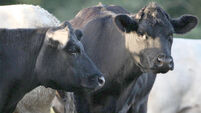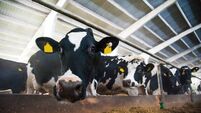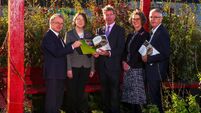Milking of 'empties' is better than culling
Dr Stephen Butler said high 'empty' rates of up to 40% at the end of the breeding season are prevalent on many Irish spring-calving dairy herds, representing a major source of financial loss.
Dr Butler said milking these non-pregnant cows for an extended lactation, and re-breeding them, was the more profitable option.
Dr Padraig French said the economic benefit of using alternative forages for winter feeding of spring-calving cows is dependent on the farm circumstances.
"When housing costs are included for the indoor systems the benefit to the outdoor systems is up to 37% reduction in wintering costs," said Dr French.
Among the alternative forages are fodder beet, kale, swedes, stubble turnips and rape.
Dr French said one strategy is to utilise forage crops, such as brassicas, in-situ.
At open days in Moorepark on Wednesday and Thursday (January 11 and 12), dairy farmers saw and discussed new developments in milk production technology with Teagasc research and advisory staff.
Speaking at the opening of the two-day event, Dr Pat Dillon, head, Teagasc Dairy Production Research Centre, Moorepark, said that new research information relating to innovations in winter and early-spring grazing management, use of forage crops to reduce winter-feed costs, latest results from once-daily milking research, and use of extended lactation would reduce the cost of infertility on dairy farms.
"Deferred grass is economically the most attractive winter feed, if the land is available at relatively low cost," said Dr Deirdre Hennessy.
Especially relevant on farms with low stocking rates, this is achieved by increasing rotation length in late summer and autumn, when herbage availability is likely to exceed demand, and deferring grazing of this grass until the winter.
Dr Michael O'Donovan said early grazing generates a 2.70 cow/day increase in profitability for each extra day at grass, in spring.
Cows should be turned out to pasture immediately after spring calving.
In certain circumstances, once-daily milking may be an option to improve labour efficiency, dairy farmers were told by Teagasc researcher, Dr Bernie O'Brien.
Latest comparisons with twice-daily milking indicated once-daily milking reduced milk production by 24%, fat by 0.38%, and protein by 0.26%, thus reducing the yield of milk solids by 17%.
Once-daily milking had a positive effect on reproductive performance and resulted in a 4% reduction in overall feed intake.









